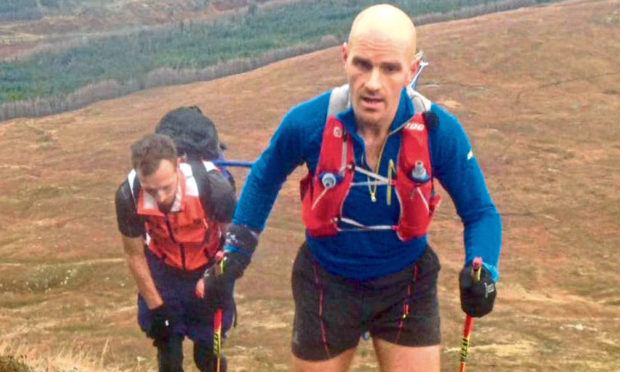Until 2020, FKT was an acronym rarely used and even more rarely recognised among Britain’s tens of thousands of running enthusiasts who were used to a regular fix of 5ks, 10ks, half marathons, marathons and ultra distance events.
But the year of Covid-19 wiped conventional racing from the calendar, forcing people to be more creative and adventurous.
They had to seek out their own personal endurance challenges or try to match those recorded by others in the past.
As a result, more and more began to be heard, written and recorded about athletes setting FKTs, or Fastest Known Times, for a bewildering variety of amazing runs in a wide range of geographical settings.
People were establishing or breaking records for running from Land’s End to John o’ Groats, from Dunbar at the eastern end of the John Muir Way to Helensburgh at its western end, or for running up and down various combinations of Scotland’s Munros.
Lochaber’s Finlay Wild was particularly busy, setting FKTs for a series of epic mountainous runs in the western Highlands, including the Tour of Mamores, Charlie Ramsay’s Round, the Mullardoch Round, Philip Tranter’s Round and the Round of Glencoe.
Now another Highland runner, Ally Beaven, has written a book – Broken – about many of these and other FKTs recorded over the course of the past nine months.
But Beaven doesn’t write from the outside looking in at these extraordinary performances.
He gets his trail shoes muddy, his brow sweaty and his body bruised by immersing himself amongst it all, frequently supporting the athletes on their epic journeys.
He notes not only the runners’ achievements, but also their thoughts, emotions and the motivational forces which drive them on.
The part-time barman and hill running enthusiast even captures a bit of the frontline action himself, setting a FKT for the Cairngorm Six – a run around the tops of Cairngorm, Ben Macdui, Cairn Toul, Braeriach, Beinn a’ Bhuird and Ben Avon, which he completed in nine hours 34 seconds.
He said: “I will just have to live with these 34sec.”
Beaven is loath to highlight any particular FKT over another, but admitted Skye athlete Donnie Campbell’s conquering of all of Scotland’s 282 Munros in 31 days – climbing 126,143 metres and running 833 miles – “is the one that bends my mind the most”.
He adds: “The making of a record like this lies in the things which are not so easily measured.
“The resilience it takes to get up day after day and head off into the hills for 12 hours, with no tangible end in sight, is something that very few possess.”
Beaven writes about what has been an extraordinary running year with no small degree of humour and an eye for detail, which comes from having shared at first hand the feelings experienced by those who set the FKTs.
Broken is published by Vertebrate Publishing.
